County Fermanagh, Northern Ireland
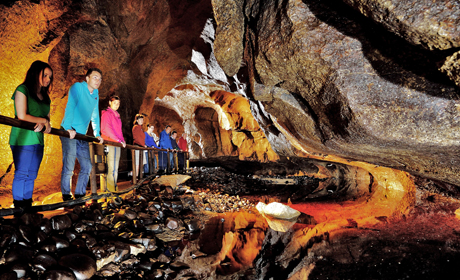
The Marble Arch Caves in Co. Fermanagh, Northern Ireland attract over 60,000 people every year, and are a key site for geoscience education in Northern Ireland.
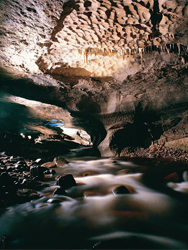
At 11.5 kilometres, Marble Arch Caves form the longest known cave system in the north of Ireland and the local karst is considered to be among the finest in the British Isles; the existence of caves in these areas can be attributed to the underlying Geology. Marble Arch Caves are the flagship site in the wider Marble Arch Caves Global Geopark, which encompasses the mountains and lakes of Fermanagh and Cavan on both sides of the Irish border.
How the caves formed
A cave is defined as a natural underground chamber. They are formed in a variety of ways including, the pounding action of the sea, by rock collapse or, as in the case of the Marble Arch Caves, by water flowing through rock slowly dissolving it away. Most caves across the world are found in limestone areas because, although limestone is a strong rock, it has certain properties which mean it is susceptible to corrosion (chemical erosion by slightly acidic water).
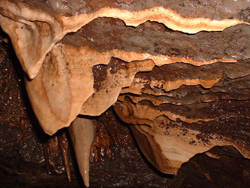 Unsurprisingly the geology of Fermanagh and parts of Cavan is dominated by Limestone. The ability of water to dissolve Limestone rock is directly associated with the materials from which it is formed and the way it is formed.
Unsurprisingly the geology of Fermanagh and parts of Cavan is dominated by Limestone. The ability of water to dissolve Limestone rock is directly associated with the materials from which it is formed and the way it is formed.
Limestone is a sedimentary rock, formed by the settling and consolidation of deposited materials. Sedimentary rocks are formed from deposits of material which has originally come from living organisms (Chemical/Organic Sedimentary rocks) or from material derived from weathering and erosion of older rocks (Clastic Sedimentary rocks). The name comes from the Latin word sedo meaning to settle or sit down.
The ancient sea-floor
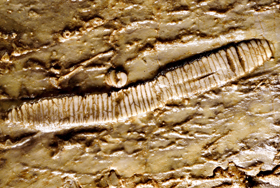 The Limestone in our Geopark formed around 330 million years ago during the Carboniferous geological period, when Ireland lay on or just slightly south of the equator.
The Limestone in our Geopark formed around 330 million years ago during the Carboniferous geological period, when Ireland lay on or just slightly south of the equator.
Located on the edge of a supercontinent, where sea-levels were higher, the area that we now call Ireland was covered by a shallow tropical sea. The limestones formed by the accumulation of lime-mud on the bottom of this ancient sea floor and from the remains of dead sea creatures that would have thrived in these waters.
Limestone is defined as containing at least 50 per cent calcium carbonate (CaCO3), a common mineral extracted from sea-water by organisms and included in their bodies as skeletons or shells. Limestone formation is a very slow process; layers and layers of limey deposits build up on the ocean floor and are compacted by the weight of the water over millions of years. Eventually the layers of sediments are consolidated into beds of limestone rock. The variations in types of limestone are huge and depend on the composition of the sediments being laid down at any one time.
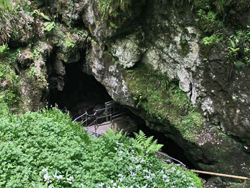 Over time beds of limestone with differing composition will be laid down on top of one another and as a result beds of different character lie on top of each other. These breaks in the sequence of limestone deposition are marked by horizontal bedding planes which are very important in the early stages of cave formation.
Over time beds of limestone with differing composition will be laid down on top of one another and as a result beds of different character lie on top of each other. These breaks in the sequence of limestone deposition are marked by horizontal bedding planes which are very important in the early stages of cave formation.
At first the beds and bedding planes lie parallel to the original sea floor, then over time movements within the earth fold and tilt the beds to form mountain ranges, exposing parts of the rock to weathering. The beds of rock become fractured through this movement and vertical fissures called joints appear.
Limestone is not a porous rock, it is actually impervious to water because its structure is made up of tightly interlocking crystals. The bedding planes and joints found in limestone are its weakness and when water gets into these it can dissolve part of the rock. Calcium Carbonate which is easily dissolved by rain and soil water, both of which are slightly acidic.
The most important factor in the growth of caves is water so the largest passages in the Marble Arch Caves have formed where there has been a ready source of water from the largest rivers on Cuilcagh Mountain, the Owenbrean, Aghinrawn and Shruh Croppa.
Text: Marble Arch Caves Global Geopark